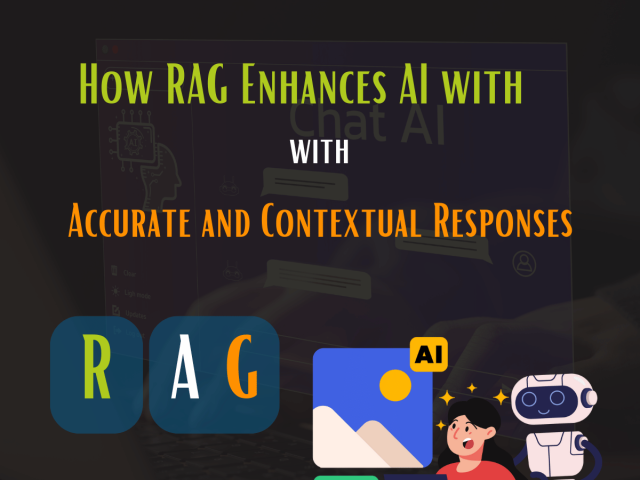Behavior Driven Development (BDD) is a software development process originated from test driven development. Lucid language and illustrative descriptions provide ease of creating better software with better understanding obtained by those involved in various development stages.
Behavior Driven Development Approach:
Generally, developers interpret the requirements received and they strive to meet them.
- BDD brings clarity in set of expectations for system functionality.
- Document created considers the developers and customers ability to understand.
- Illustrative document with mention of examples enables the approvals from customer for development.
- Assurance of focus on the actual requirements without twisted facts and assumptions.
- Documented examples become basis of acceptance testing.
- Test driven development when combined with Behavior driven development makes the specifications readable and easy to execute.
Essential BDD:
Development has gained speed and technology is changing faster than ever. Business Enterprises now-a-days adapt to the changing technology in order to implement the best possible solutions immediately.
During the times of increasing demand, the development team can excel if the errors are at minimal level. Time and money involved in coding and testing is limited with tight delivery schedules. Better processes, tools, and trained team create a joint impact on quality of development.
Top 5 Open Source BDD Tools:
Frameworks like Java, Python, and PHP have BDD Tools specifically designed to perform in support of these programming languages.
- Cucumber:
This open source Behavior Driven Development – BDD tool is widely used in writing automated acceptance testing documents for various web applications.
Cucumber is a software tool primarily implemented in Ruby and is not available for Java framework. Simple and non-technical method of test report writing empowers all stakeholders to contribute to the process. The acceptance is due to its ease to explain the reports to non-testers. Cucumber has over 30 million downloads for BDD tools.
Benefits of Cucumber:
- It supports programming languages such as Groovy, .NET, Python, PHP, Perl, Scala, and few other languages.
- Easy execution and reusable codes.
- Simple format of set of validations help in automation testing.
- Codes of this tool are usable along with other tools like Watir, Selenium etc.
- Capable of centrally storing the user requirement statement and the test conditions in single document.
- The Acceptance Test conditions are the behavior sets defined herein.
- The behavior set implementation and working exhibited in a way allows easy tracking.
- United working on a problem statement helps in deriving the most suitable behavior set.
Web based automation Developers, Testers and Management prefer Cucumber for its features and end-user experience in spite of being free of cost.
Fundamental requirements to use Cucumber:
- Ruby and Ruby development kit installation.
- Install Cucumber.
Refer- https://cucumber.io/
- Selenium:
The open source Behavior Driven Development (BDD) tool Selenium is popular for web applications. There are few test automation tools, built on the selenium framework.
Scripts written in number of programming languages such as C#, Groovy, Java, Python, PHP, Perl, and Ruby multiplies its usability.
Benefits of Selenium:
- It supports a wide range of programming languages including C#, Java, Python, PHP, Ruby, etc.
- Easy to maintain and known for its flexibility to write advanced test scripts; in order to meet several levels of complexity of the behavior driven development.
- It has largest community support network, wide range of libraries.
- Selenium IDE is available creating testing documents without knowledge of scripting language.
- Faster creation of bug reproduction scripts
- Selenium supports Cross-platform such as Windows, Mac, and Linux.
- Selenium Web driver works fine Cross-browsers like Chrome, Firefox, and IE.
- Selenium is a base for a vast amount of other testing tools.
Fundamental requirements to use Selenium:
- Download or use from Add-ons of Firefox.
Selenium is one of the most popular free automation testing frameworks for web applications. The developers and testers have flexibility of writing advance test scripts to meet various levels of complexity of the programs.
Refer- https://www.seleniumhq.org/
- Appium:
Appium is an open source test automation framework proposed for mobile applications as well as desktop apps. This BDD tool supports automation of inbuilt and hybrid mobile web applications built for iOS and Android Smartphones.
Benefits of Appium:
- Easy to install and use in mobile testing
- Testing the app you created without creating other instance
- No restrictions of know-how of programming languages in order to run the tests
- Cross-platform usage and reusability of codes over platforms such as iOS, Android, Windows, Mac
- Choice over test runner and framework
- Create elements repositories and easy management of updated versions
- Mixing of codes from client libraries to your codes for faster work and saving time.
- Appium supports the iOS simulators as well as the Android emulators
Fundamental requirements to use Appium:
- Install on PC.
- Automating Android App is possible by connecting mobile to PC.
One of the best mobile automation testing tools is a great flexible BDD tool too. It maintains transparency between parties and speeds up testing and development process.
Refer- http://appium.io/
- HipTest:
HipTest is a modern BDD tool that tests in real time and can deliver continuously to strengthen the process of test management on the web platform.
Benefits of HipTest:
- Ongoing testing tool with immense support for Behavior Driven Development.
- The parties involved can define acceptance criteria, using the terms that clients can easily understand.
- Automated as well as manual testing is possible.
- It can support number of frameworks, which increases the capacity of testing.
- Deployment of sources can be result driven.
- Reusability of the set of behaviors changes the intensity of action for time bound results.
- The real time updates impact the quality of test documentation as well as further actionable items.
- Tracking the requirements, bugs, and modifications.
- HipTest is flexible thus is usable with many other BDD Tools such as Cucumber, Specflow, Selenium, and more.
- Community Support is worth the try.
Fundamental requirements to use HipTest:
Just download and use.
Testers and the stakeholders prefer this HipTest free version for small companies. For the large companies with thousands of users the paid version is available.
Refer- https://hiptest.com/
Jbehave:
JBehave the framework for Behavior Driven Development (BDD) for Java is advancement of the Test driven development (TDD) and Acceptance test driven design. Majorly the demand of this BBD Tool is due to its accessibility and the ease of designing test documents.
Benefits of Jbehave:
- It is text based story tool supported by IDE and this can run on Eclipse and Netbeans
- Available as Jbehave Web allows easy integration with Selenium to run test scripts on web applications.
- Instantaneous response from the tool encourages the new and experienced developers and testers to use it more.
- Its non technical language helps to design the behavior sets and define the design as per user requirement.
- It has an inbuilt feature that helps generate reports in XML, HTML and text.
Fundamental requirements to use Jbehave:
- Download and use but it needs live network connection.
This open source framework is reliable for testers to create story, configure, and run it. Non-technical as well as management can check the same without prior programming knowledge.
Refer- http://jbehave.org/
BDD Tools Answer to Your Questions:
- Development context for building software
- Scenario wise story building
- What needs testing and what does not
- How should the feature function
- Simplicity of coding even to create complex programs
- Occurrence of events in sequence
- No duplicate features
- User expectations success level
Test driven development (TDD) contains details of how software works whereas the Behavior Driven Development (BDD) indicates how users use the software. BDD Tools make the aim clear and code executable as result driven process. Select the suitable one from top 5 open source BDD Tools and explore.





